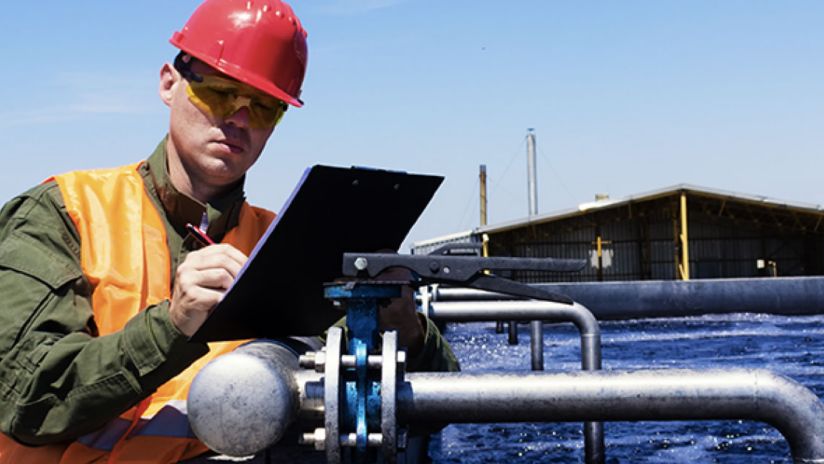Transforming water utilities with the Internet of Things

Foreword
Water is one of our most precious resources, critical to the health and well-being of our nation.
The majority of Australians have access to running water with a simple turn of a tap. While recent droughts have put water use top of mind, most of us still expect that when we turn the tap, water will come out.
Yet we don’t often think about everything involved in supplying water from the reservoir to our tap. Delivering fresh water and managing wastewater are complex tasks undertaken on a staggering scale. The Water Services Association of Australia (WSAA) estimates water utilities provide nearly 2,000 billion litres of drinking water to households and businesses, and release 1,500 billion litres of treated wastewater, each year.
Such scale requires assets and infrastructure to match. Managing and maintaining these assets poses significant challenges for utilities firms. The consequences of getting wrong can be range from wasted water to water shortages and sewer overflows. The knock-on effects for utilities include lost revenues and damaged reputations.
As infrastructure ages and upkeep and upgrades become more expensive, and consumers expect more from their utilities while water itself becomes even more precious, utilities are examining how they can use innovative technologies to overcome strategic challenges throughout the water network.
In this paper, we explore how innovative water utilities in Australia are harnessing the Internet of Things to reduce operational costs, improve customer experiences and plan for the future. These companies offer examples, and world-first practices in some cases, of how technology can help solve strategic challenges throughout the water network.
Maintaining Australia’s ageing infrastructure
Much of Australia’s existing water infrastructure was built many decades ago. The Leeton water treatment plant for example, which supplies fresh water to the people and businesses in the Murrumbidgee Irrigation Area and Riverina region, was built in 1930s.
Maintaining and upgrading infrastructure is very costly and costs increase as assets and equipment age. The Water Services Association of Australia estimates their members collectively spend between $3.5 and $4.5 billion on water infrastructure every year.
The Leeton plant had major upgrades in 1960s and again the 1990s, and now undertakes a variety of treatment tasks including flocculation, sedimentation, filtration, fluoridation and chlorination. Maintaining each individual system requires constant monitoring to optimise efficiency and prevent costly breakdowns. When they do occur, the plant operators need to identify and resolve them quickly to minimise disruption to the water supply.
Leeton Shire Council is committed using its resources in more efficient ways. Faced with the increasing expenses of managing the plant, the council sought better ways to manage their plant maintenance and automate existing infrastructure.
We were looking for better ways of dealing with ageing infrastructure, poor productivity and increasing operational costs. We landed on an equipment monitoring solution via the Internet of Thing said Gerard Simms, IT manager at Leeton Council.
Leeton needed an established, effective and cost-effective solution. Telstra recommended trialling MOVUS FitMachine®, a predictive maintenance solution covering a wide range of assets from heating and ventilation to pumps, blowers, compressors and motors. Data from the sensor is sent to a cloud-based dashboard for viewing and analysing machine health, degradation, utilisation and energy levels.
The system was simple to install and use with magnetically attached sensors, communications and AI (artificial intelligence) to provide digital oversight, meaning the council could get up and running without long deployment timelines.
The system helps predict potential breakdowns and notifies the plant’s control centre to mitigate the risk of total system shutdown. It also enables the plant management team to schedule maintenance when it’s needed.
Leeton Council estimates it is saving approximately $50,000 per pump per year in the treatment plant by only servicing them when required.
Increasing treatment plant uptime
Leeton’s system proved its value when the plant’s maintenance team was called out on a hot Christmas Day to rectify a fault with the main lift pump.
The backup pump was barely keeping up with demand for water and levels in the towers was beginning to fall. A quick check of the MOVUS dashboard rules out a mechanical fault and helped the team narrow down the cause and quickly fix the problem before water supply to homes and businesses was interrupted.
Improving distribution networks for better customer experiences
Sydney Water is another utility evaluating how IoT technologies and networks can improve their operations. Sydney Water supplies water, wastewater, recycled water and some stormwater services to more than five million people in Greater Sydney and the Illawarra via a complex assets system of 46,000km of pipes, treatment plants, pumping station and remote reservoirs.
Maintaining pressure and water flow and identifying leaks within Sydney Water’s extensive assets is a multifaceted operation, especially when it comes to distribution networks. In many cases, customer feedback is the main channel for sensing problems.
The team at Sydney Water wanted to improve the service they deliver to customers by reducing the number of leaks and overflow incidents. To do that they wanted a better way to predict and prevent faults from affecting customers.
Together, Sydney Water and Telstra developed a proof of concept to enable Sydney Water to evaluate the business case for using the Internet of Things to automate monitoring of its smaller assets.
The project aimed to deliver better customer outcomes by predicting and averting sewer blockages and overflows and monitoring water pressure in the pipes.
Over 250 devices were deployed to monitor pressure, sewer levels and water flow. Advanced algorithms processed the data received from the sensors and provided insights that enabled Sydney Water to pre-emptively stop pipe blockages and overflows that could impact both customers and the environment.
Sensors were also deployed on the distribution network to provide data on water pressure to predict and help prevent leaks and other issues including water theft.
Saving thousands of people and places from overflows
Throughout the nine-month long proof of concept, Sydney Water detected 22 blockages and overflow incidents. These blockages could have disrupted water flow and impacted customers and the environment.
Sydney Water also used the data to prevent a potential overflow that could have affected more than 4,000 properties.

Planning our sustainable water future
Water utilities don’t only face the challenge of managing existing demand and infrastructure. Understanding and preparing for how we will use water in the future is arguably the bigger challenge.
This is the next step Sydney Water is taking on its IoT journey. Mike Wassell, Head of Operational Technology Services at Sydney Water, said is going to use digital water metering on a mass scale to understand and change customer usage patterns. “We are in the midst of rolling out 10,000 devices in our network. Once we are realising the benefits from those devices, it will be millions!
IoT solutions incorporate digital water meters to collect user data and advanced analytics to enable data-driven water demand management decision making.
Unlike manual water meter reads which are conducted quarterly or estimated (where access to the property is impossible), digitally connected meters can provide more accurate, timely data. Telstra’s Captis Pulse – a mechanical IoT device – can sample at intervals of 10 seconds or under to collect granular water use data, including the use of taps and toilets.
Insights for better water management
Sydney Water’s IoT proof of concept included an assessment of the value of digital water meters on customer properties. The proof of concept (PoC) demonstrated digital metering can help to detect leaks in customer properties or the surrounding networks. The ability to detect leaks quickly has enabled Sydney Water to minimise water wastage. Providing customers with more accurate water bills has also helped to minimise bill shock, leading to a better experience for the end users.
A platform for meeting strategic challenges
These water authorities are pioneering the use of IoT in the utility sector and already seeing the benefits.
Targeted maintenance programs, fault monitoring and water metering not only help to reduce operational costs and reduce non-revenue water. They also enable utilities to utilities to defer capital investment programs and increase the lifetime of major assets.
By using IoT devices and analytics platforms to predict and prevent blockages and sewer overflows, water utilities can save considerable damage to property and the environment, further improving their reputation as custodians of our vital resources.
This is only the beginning though. At Telstra we collaborate with utilities and other partners to innovate and create new solutions. We are also working with device manufacturers to optimise devices on our IoT network, so utility firms can benefit from improved battery life for longer device lifetimes, better operation in challenging environments, improved digital water meter functionality and interoperability standards.
With a team of IoT specialists, ongoing infrastructure investment, market-leading technology and global partnerships, IoT is at the core of our strategy because we believe in the technology’s potential to transform industries and lives.
As the Cooperative Research Centre for Water Sensitive Cities, part of the Commonwealth Government’s Cooperative Research Centre Programme, says: “the challenge for the water utilities is to not only continue to meet basic human needs but to also meet community expectations that utilities play a greater role in assuring cities’ future liveability, resilience and economic performance.
What’s clear from the examples of Sydney Water and Leeton Council is that IoT technologies can help utilities confidently meet these long-term strategic challenges.

